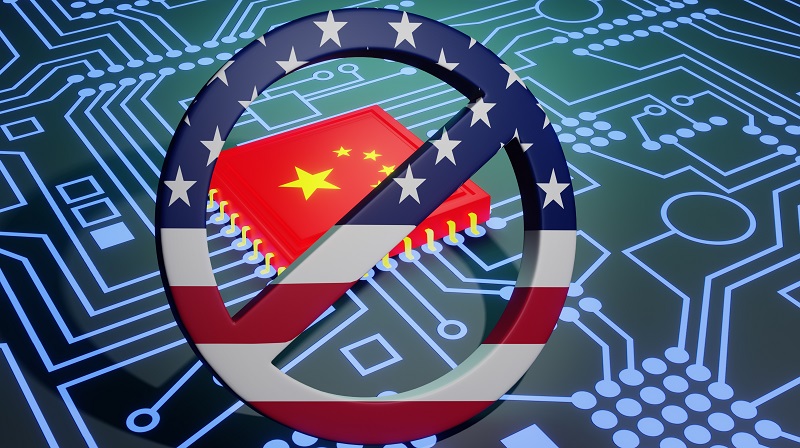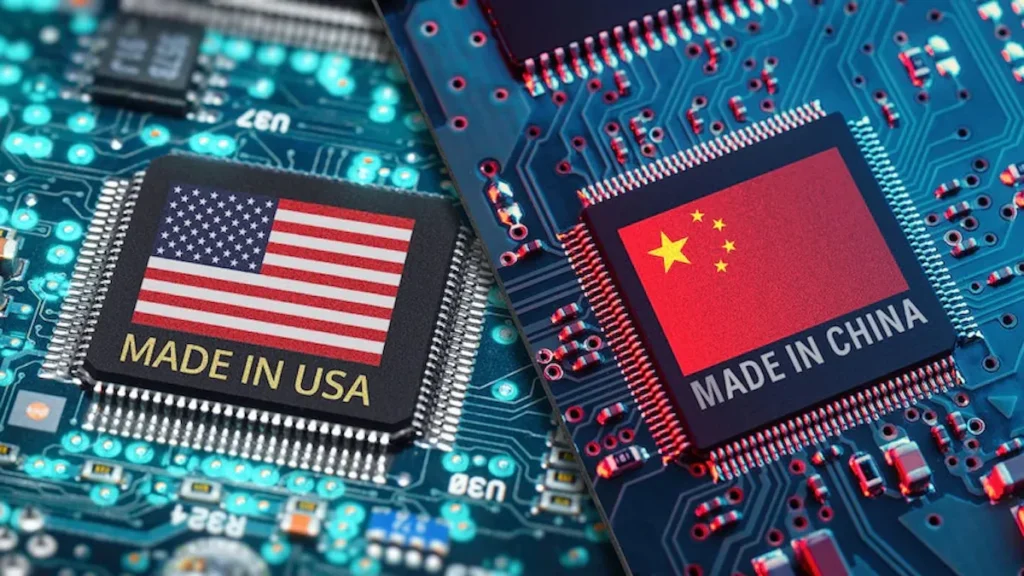The Limits of the China Chip Ban: Washington’s Export Controls Could End Up Helping Beijing
In recent years, the United States has imposed a series of stringent export controls on China, particularly targeting the semiconductor industry, in an effort to curtail China’s technological advancement and reduce its dependence on American technology. The objective of these measures is to hinder China’s ability to develop and deploy cutting-edge technologies that could pose a threat to U.S. national security and economic interests. However, despite the intentions behind these restrictions, there is a growing concern that Washington’s chip ban could inadvertently bolster Beijing’s technological capabilities and accelerate China’s efforts to become self-reliant in semiconductor production. This article explores the potential unintended consequences of the U.S. chip ban and examines how Washington’s export controls might end up benefiting Beijing.

The Rationale Behind the Chip Ban
The primary rationale for the U.S. chip ban is to limit China’s access to advanced semiconductor technology that could be used in military applications or to enhance its technological prowess in sectors critical to national security. The U.S. government argues that by restricting China’s access to high-performance chips and related technologies, it can slow down China’s progress in areas such as artificial intelligence, supercomputing, and advanced military systems.
In recent years, the U.S. has implemented various export controls and sanctions targeting Chinese technology companies, such as Huawei and SMIC (Semiconductor Manufacturing International Corporation). These measures include restricting the sale of advanced semiconductor equipment and technologies to Chinese firms, as well as prohibiting U.S. companies from supplying crucial components and software to these entities.

China’s Response: Accelerated Self-Reliance
Rather than crippling China’s technological ambitions, the U.S. chip ban has catalyzed a significant shift in China’s strategy towards semiconductor self-reliance. Faced with the prospect of prolonged supply chain disruptions and restricted access to critical technologies, China has accelerated its efforts to develop its domestic semiconductor industry. The Chinese government has launched a series of initiatives and investments aimed at boosting domestic chip production and reducing reliance on foreign technology.
For instance, China has increased funding for research and development in semiconductor technology, provided subsidies to domestic chip manufacturers, and invested in building state-of-the-art fabrication facilities. The “Made in China 2025” plan and subsequent policies emphasize the development of high-tech industries, including semiconductors, as a cornerstone of China’s economic strategy. The U.S. chip ban has thus spurred China to double down on these initiatives, with the goal of achieving technological self-sufficiency.

The Rise of Chinese Semiconductor Capabilities
China’s push for semiconductor self-reliance has already begun to yield tangible results. The country has made notable strides in advancing its semiconductor technology and manufacturing capabilities. Chinese companies such as SMIC have invested heavily in upgrading their production facilities and developing advanced chip technologies.
In addition to domestic investments, China has sought to build partnerships and collaborations with non-U.S. entities, including firms in countries like Taiwan, South Korea, and Japan. These partnerships help China access advanced technologies and expertise that it might otherwise be unable to acquire due to U.S. restrictions. By diversifying its sources of technology and investing in its own capabilities, China is gradually reducing its dependence on U.S. technology and improving its position in the global semiconductor market.

Potential Unintended Consequences for the U.S.
While the U.S. chip ban was designed to limit China’s technological advancements, it could inadvertently create opportunities for Beijing to strengthen its semiconductor industry. Several unintended consequences could arise from Washington’s export controls:
- Accelerated Technological Advancements: The restrictions imposed by the U.S. may encourage China to invest more aggressively in its own semiconductor research and development. This could lead to faster technological advancements and innovations within China’s domestic semiconductor industry, potentially narrowing the technological gap with the U.S. and its allies.
- Diversification of Supply Chains: As a response to the chip ban, China has sought to diversify its supply chains and reduce its reliance on U.S. technology. This diversification could lead to the development of alternative supply chains and partnerships that bypass U.S. restrictions, making it more challenging for the U.S. to control China’s access to critical technologies.
- Strengthening of China’s Domestic Industry: The U.S. chip ban has provided a catalyst for China to bolster its domestic semiconductor industry. Increased investment and policy support for Chinese chip manufacturers could enhance their production capabilities, leading to a more robust and competitive domestic industry that could eventually challenge U.S. dominance in the global semiconductor market.
- Potential for Increased Collaboration with Non-U.S. Allies: In response to U.S. restrictions, China has sought to deepen collaborations with non-U.S. allies and technology providers. This could result in the formation of new technological alliances and partnerships that enhance China’s access to advanced semiconductor technologies and expertise, potentially reducing the effectiveness of U.S. export controls.
Strategic Implications for Global Semiconductor Markets
The broader strategic implications of the U.S. chip ban extend beyond the immediate context of U.S.-China relations. The global semiconductor market is highly interconnected, with complex supply chains and significant interdependencies between countries and companies. As China makes strides in developing its semiconductor capabilities, it could alter the dynamics of the global semiconductor industry.
For example, increased competition from Chinese semiconductor firms could impact the market share and profitability of U.S. and allied semiconductor companies. Additionally, shifts in global supply chains and technological collaborations could lead to changes in the balance of power within the semiconductor industry, with potential ramifications for innovation, trade policies, and geopolitical relations.
Conclusion
The U.S. chip ban, while intended to limit China’s technological advancements and protect national security, may have unintended consequences that ultimately benefit Beijing. By accelerating China’s efforts to achieve semiconductor self-reliance and diversify its technology sources, Washington’s export controls could inadvertently bolster China’s position in the global semiconductor market. The evolving dynamics of the semiconductor industry underscore the complexities of managing technological competition and the need for a nuanced approach to addressing global technological challenges.
As the situation develops, it will be crucial for policymakers in both the U.S. and China to navigate these challenges with strategic foresight and adaptability. The goal should be to balance national security interests with fostering a competitive and innovative global technology landscape. Understanding and addressing the potential unintended consequences of export controls will be key to shaping a more effective and sustainable approach to managing technological competition in the 21st century.

